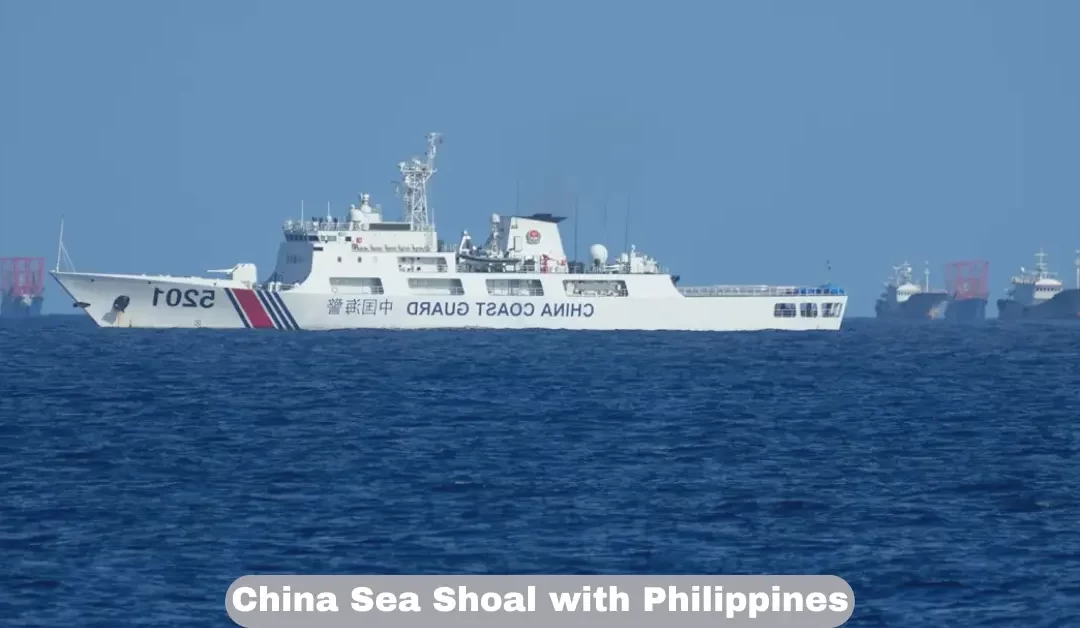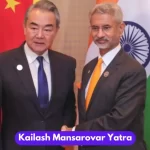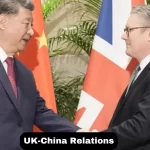Chinese Coast Guard Vessel Near Thitu Island
A Chinese Coast Guard vessel stayed near suspected Chinese militia ships close to Thitu Island (locally known as Pag-asa Island) on November 6, 2024, just before the Philippine military conducted joint exercises in the disputed South China Sea.
China Publishes Baselines for Scarborough Shoal
China has announced new baselines for a contested shoal in the South China Sea that it took control of from the Philippines in 2012. This move is expected to raise tensions in the region, where multiple nations have overlapping territorial claims.
where multiple nations have overlapping territorial claims.
Details of the Baselines
On Sunday, the Chinese Foreign Ministry shared the geographic coordinates for the baselines around Scarborough Shoal online. These baselines help define a country’s territorial waters and exclusive economic zone (EEZ).
- The Foreign Ministry stated that China strongly opposes any actions that challenge its claims and will take all necessary steps to protect its territorial sovereignty and maritime rights.
Background on the South China Sea Disputes
China claims almost the entire South China Sea, a crucial shipping route in Asia. Several Southeast Asian nations, including the Philippines and Vietnam, also claim parts of these waters, leading to frequent disputes.
- The South China Sea is rich in natural resources, including fish and potential oil and gas reserves, adding to its strategic importance.
- Both China and the Philippines lay claim to Scarborough Shoal, located west of Luzon, the main island of the Philippines.
- In 2012, China seized control of the shoal and limited access for Filipino fishermen.
- In 2016, an international arbitration court ruled against most of China’s claims in the South China Sea. However, China has rejected this ruling and continues its activities in the region.
Rising Tensions and Incidents
The situation has led to multiple confrontations. Chinese and Philippine ships have collided on several occasions, and China’s coast guard has used water cannons against Philippine vessels. These incidents highlight the persistent risk of escalation in the region.
- The South China Sea has seen increased military patrols and naval exercises by various countries, further fueling tensions.
- The presence of Chinese militia ships near strategic points like Thitu Island has added to concerns about the militarization of the area.
Economic and Strategic Significance
The South China Sea is not only vital for shipping—with trillions of dollars’ worth of goods passing through annually—but also holds significant economic potential. The region’s resources, such as fish stocks and energy reserves, are crucial for the economic interests of neighboring nations.
- The sea serves as a major route for global trade, connecting Asian economies with the rest of the world.
- Control over these waters could impact regional security and influence, giving an advantage to whichever nation asserts dominance.
Philippine Response and New Laws
Just two days before China’s recent announcement, Philippine President Ferdinand Marcos Jr. signed two laws that outline the country’s claims in the disputed waters.
- The Philippine Maritime Zones Act defines the country’s maritime boundaries and asserts its claims in the South China Sea.
- Another law focuses on strengthening the country’s capabilities to monitor and manage its maritime resources.
- These legislative moves are part of the Philippines’ broader strategy to reinforce its sovereignty and respond to growing Chinese activities in the region.
International Reactions
The publication of baselines by China has drawn mixed responses from the international community. The U.S. and allied nations have often voiced support for the freedom of navigation in the South China Sea.
- The U.S. has conducted freedom of navigation operations to challenge what it considers excessive maritime claims by China.
- Neighboring Southeast Asian countries, such as Vietnam and Malaysia, continue to monitor developments closely, as they have territorial claims that overlap with China’s.
- Regional organizations like ASEAN have struggled to present a unified stance on the issue due to the varying interests of member states.































